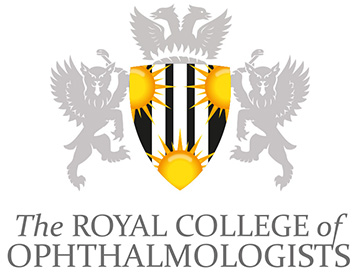Choice of anti VEGF agents for wet AMD treatments
7 March 2014
College Statement
Ophthalmologists have a choice of two anti-VEGF agents for the treatment of wet AMD, following NICE guidance on Ranibizumab (TA155) and Aflibercept (TA294). Photodynamic therapy is also licensed and approved and still has a role in a small subset of patients. An anti-VEGF agent is generally used for the treatment of wet AMD and most patients will respond to treatment. Some patients do not have an adequate response to the initial anti-VEGF agent and this raises the issue as to how these patients are best managed.
The Royal College of Ophthalmologists believes that in this situation the ophthalmologist may consider using a different anti-VEGF agent to the treat wet AMD.
The use of a second anti-VEGF agent should be considered when:-
- a particular antiVEGF drug has not shown clinical benefit after optimum treatment;
- where continued use of the initial anti-VEGF agent is unsuitable for example because of an allergic response;
- and where there is still potential for improvement in vision with further treatment.
Patients with vision of >6/96 and active ‘wet’ AMD are eligible for treatment with either Ranibizumab or Aflibercept under NICE guidance. Prior treatment is not an exclusion criterion.
The College supports the application of NICE guidance on anti-VEGF drugs, Ranibizumab and Aflibercept for both initial treatment as well as sequential treatment of wet AMD. Either drug can be used and in a small subset of patients both approved anti-VEGF agents may be used to optimize treatment.
The College has sought clarification from NICE on this issue. The response is outlined below:
‘We are aware our technology appraisal guidance on the use of aflibercept for the treatment of wet age-related macular degeneration has sparked discussions at a local level. In light of the enquiries we have received, we have discussed the issues that have been raised and reviewed the wording of NICE website title pages. We have decided not to publish a clarification statement on the website. However, our response to enquiries on this topic is copied below for you information:
Sequential use of aflibercept and ranibizumab
The Committee did not address sequencing ‘of aflibercept and/or ranibizumab in either appraisal as TA155 and TA294 were both appraised via the single technology appraisal (STA) process. It is important to note that both ranibizumab (TA155) and aflibercept (TA294) are recommended ‘as options’, so the clinician will decide which of the drugs is most appropriate for each patient.
This is no different from any disease area where more than one technology is approved by NICE ’as an option’. When NICE recommends a treatment ‘as an option’, the NHS must make sure it is available, normally within three months of the guidance being issued. This means that, if a patient has wet age related macular degeneration and the doctor responsible for their care thinks that aflibercept solution for injection is the right treatment, it should be available for use, in line with NICE’s recommendations.
We understand that there are discussions at a local level about whether or not switching and/or sequential use of aflibercept and ranibizumab will provide any benefits to patients. However as NICE has not considered any evidence relating to these situations, we are unable to provide advice.
Guidance title and reference to ‘first line’ treatment
The title of TA294, Macular degeneration (wet age-related) – aflibercept (1st line), is the title of the topic referral made to NICE by the Department of Health for Technology Appraisal development. However, the recommendations within the guidance reflect the aflibercept marketing authorisation and do not specify first line treatment. The marketing authorisation is ‘for adults for the treatment of neovascular (wet) age related macular degeneration (AMD)’
We have also reviewed the title of the NICE webpages for this guidance and have now amended the title pages on the NICE website to remove reference to ‘first line’ to be entirely consistent with the marketing authorisation population and the TA294 guidance recommendations.’
The College urges commissioners to adopt commissioning policies that are in the patient’s best interest. This should allow the use of any of the NICE approved treatments for wet AMD both for initial treatment and subsequent management. This should include the option of switching anti-VEGFagents if clinically indicated.
February 2014
